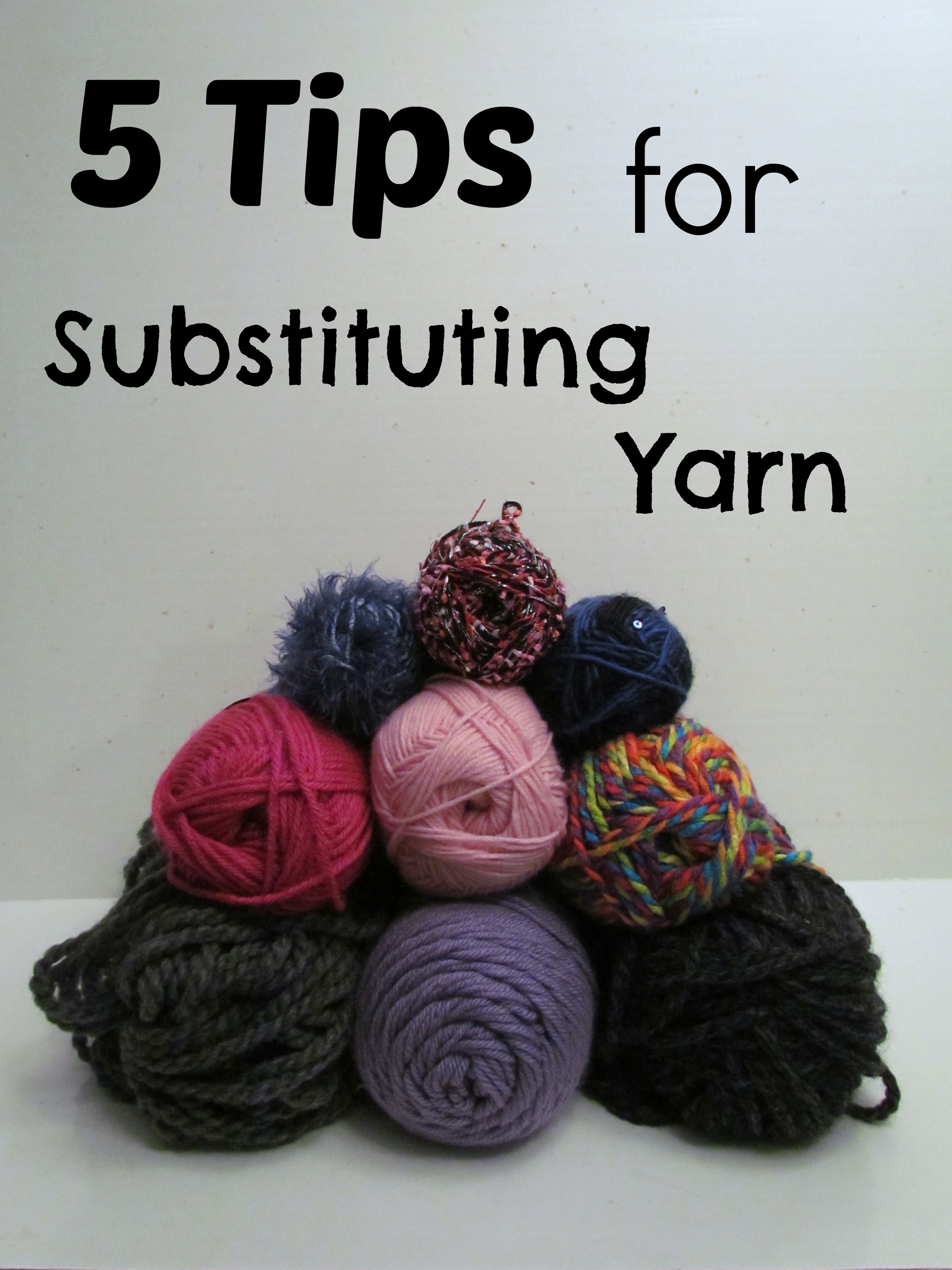5 Tips for Choosing a Yarn Substitution
Let’s face it. We’ve all seen the perfect pattern. It looks amazing in the photo and you just need to make that! Once you choose the pattern, you may go searching for the yarn that was recommended only to find:
a) you may not have a LYS (Local Yarn Shop), or they may not carry the yarn you’re looking for, or
b) maybe you can’t afford the specific yarn that is recommended at this time.
Have no fear! You can substitute the yarn for something more local, or cost effective. Below are a few things you will want to take into consideration before just buying a different yarn.
- Yarn Weight – What is the weight of the yarn that the project calls for?
Almost all yarns are now categorized by a weight number from #1 – #6 (and I just saw a sneak peek of a #7 coming out!). I believe worsted weight#4 is the most commonly used, but #3 is used for many baby items, shawls, etc; while #5 and #6 are bulky and great for seasonal items. Keeping to the same weight that is called for will be a good beginning point for finding an alternative replacement, but keep in mind brands may very slightly. For more information on making sure you have enough yarn for your project, or help reading a yarn label, please read my article Tips for Substituting Yarn. Also, PlanetJune did an excellent article about size variations even in the same weight yarns. Click here to read her article: Worsted Weight Yarn Comparison.
- Gauge – What is the yarn’s gauge?
The gauge of the yarn determines how many stitches and rows fit into a 4″ square. Many yarn labels will give you this information. You will want to stick to a yarn that has the same gauge as the gauge given for the project. NOTE: You will want to double check your personal gauge before beginning your project to make sure your gauge matches the designers. For more information on why gauge is important, please read my post: Is Crochet Gauge Important?
- Fiber Content – What is the yarn’s fiber content? Wool? Acrylic? Cotton?
Depending on the project you may be able to use a different fiber yarn but consider the following. How will the fabric drape if you use something different? (ex: there is a big difference in the way something silk drapes vs. the way something wool drapes) You also need to consider the recipient. Do they have a wool or acrylic allergy?
- Color – Are you sticking with the color used in the sample project? Or did you have another color in mind?
What about switching a solid color to a variegated? Many times this is fine, but pay attention to the stitches used. Shells, cables, or textured stitches will generally lose their visual appeal when you use a variegated yarn. Work up a swatch to see what the end result will look like before making the entire project.
- Texture – Consider what the finished project will look like with a different texture yarn.
There are so many yarn options now that this one may be hard. There are ribbon, loopy, fur, chenille, and so many more. Try to visualize what your project will look like with a different texture yarn. Also, think of the recipient. (Ex: you won’t want to use a fur yarn for a baby blanket because babies put things in their mouth and they could choke on the fur that comes loose.)
All these will play a part in how your finished project will look. Many times substituting with a different yarn is fine, but it may change the finished look of the project. Always do a sample swatch to make sure you will be happy with the results.
Happy Crocheting!


thank you for this info!